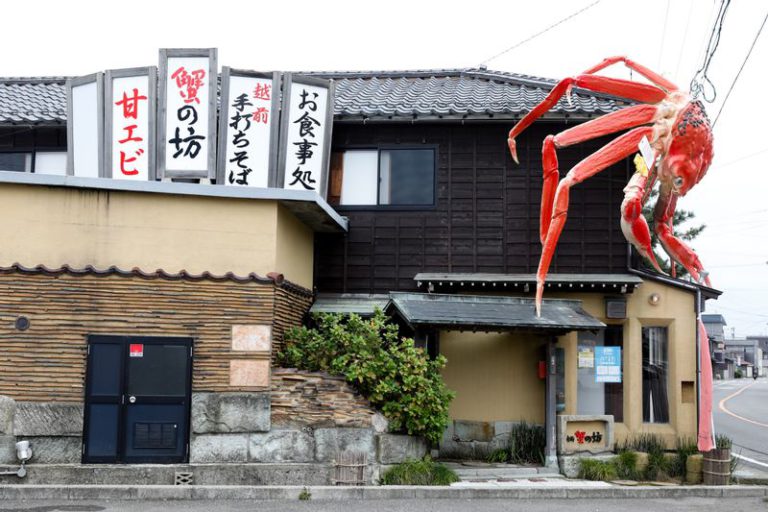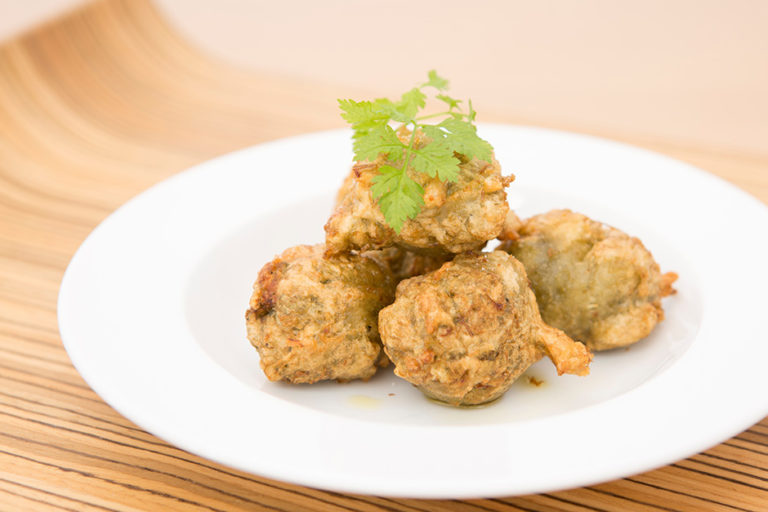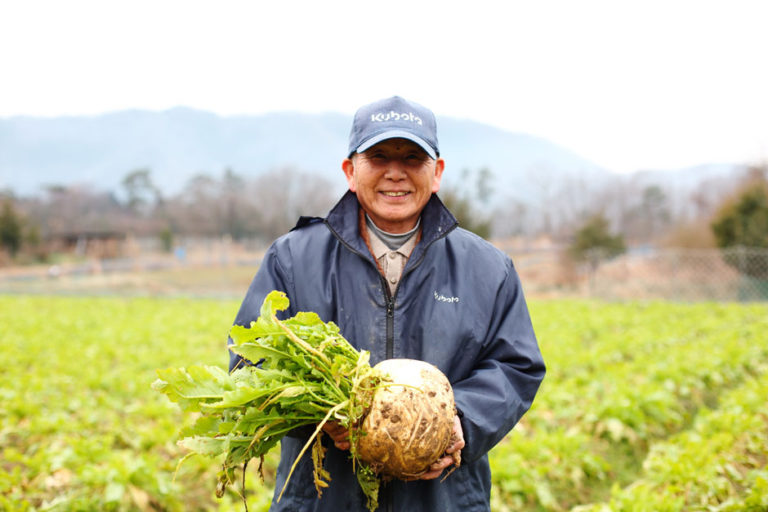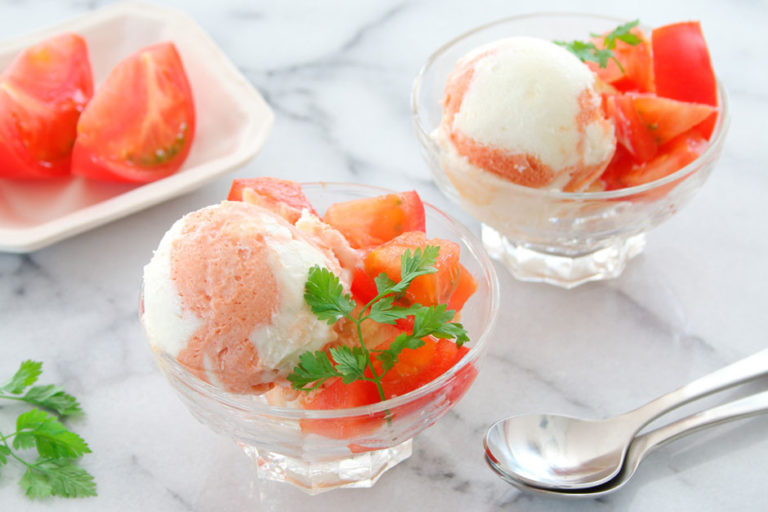Red Sweet Shrimp from the Oceans of Beautiful Mikuni
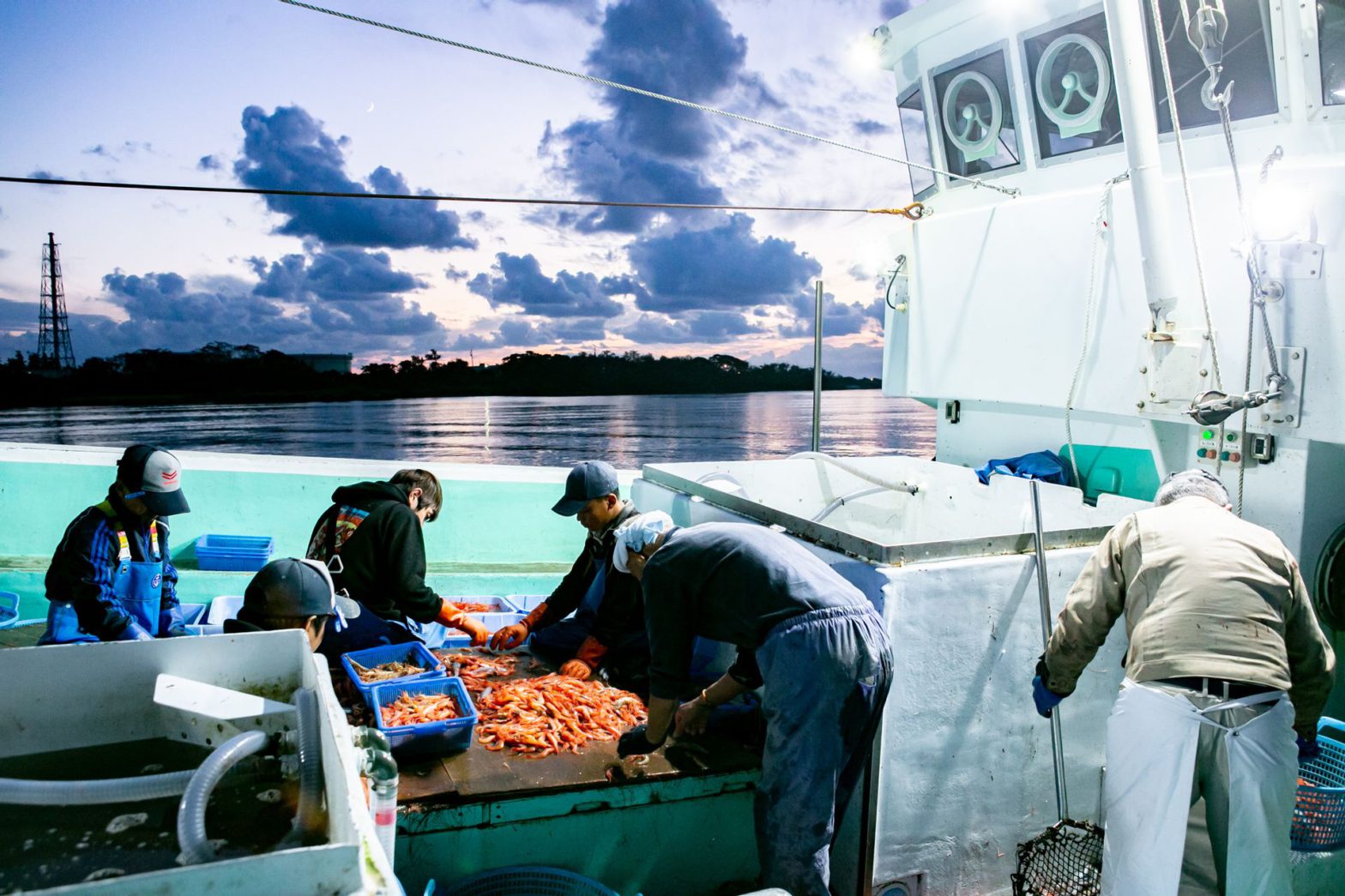
Mikuni is known for its winter snow crab, but sweet shrimp is also a noted delicacy along with the snow crab. The official name for this type of shrimp is Pandalus eous, and it lives on the sea floor in areas with good water quality. It is said that the Mikuni Port was the first to haul in sweet shrimp in 1959, and the area still boasts the largest amount of sweet shrimp caught in Fukui Prefecture.
Sweet shrimp fishing at the Mikuni Port evolved through the diligent work of predecessors
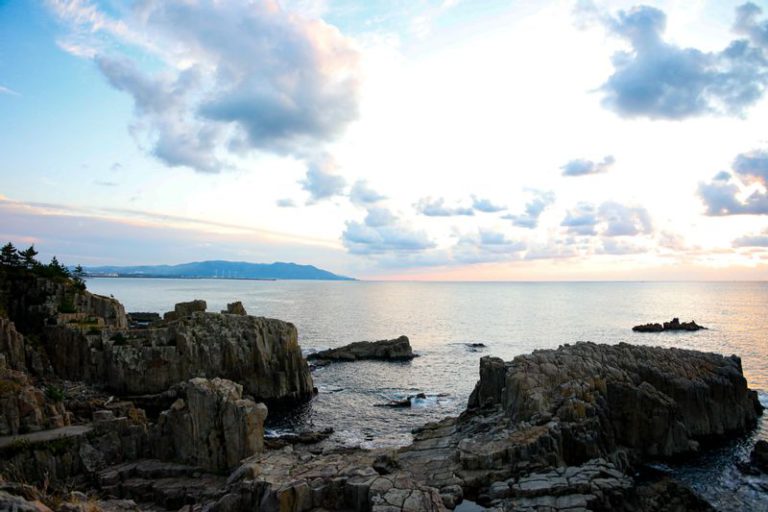
Mikuni lies at the mouth of the clear Kuzuryugawa River, and is also close to the unique scenic spot Tojinbo, at which one kilometer of jutting rocky terrain contrasting with the Sea of Japan can be seen. Fishing was popular in this area from a long time ago, and it used to be a bustling port for the kitamaebune cargo ships which traveled between Kyoto and Edo carrying wares such as kelp and herring from Hokkaido.
Fishing for sweet shrimp in the vicinity of the Mikuni Port is carried out in September to early November for the winter, and from March to June for the spring.
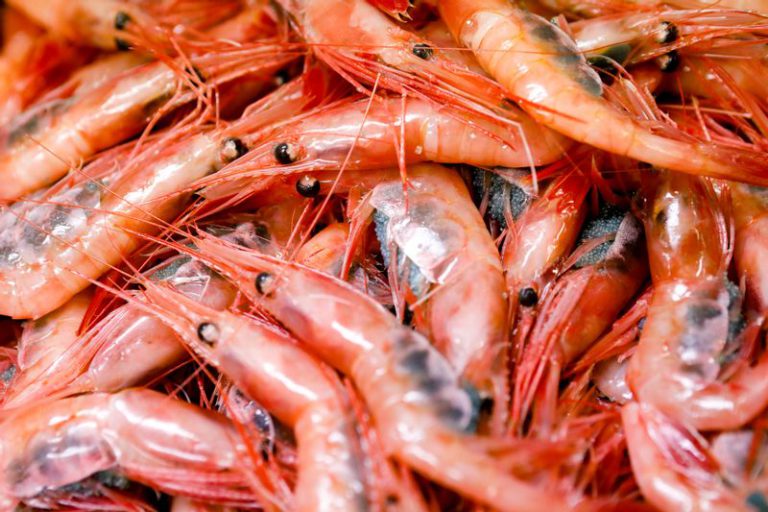
The highest grade of sweet shrimp is those with roe—characteristic bright blue eggs in their bellies—caught during the winter months. The mochiebi caught during springtime in April to May are shrimp right after molting, featuring soft shells. These sweet shrimp have been becoming popular recently, as their soft shells allow them to be eaten whole.
“You can tell a good shrimp by its color. Quality sweet shrimp have a bright red color. The Mikuni Port has strict quality control standards and selection regimen in which the unloaded shrimp are immediately chilled in cold water tanks, at which high quality shrimp are then selected by size,” explains Masakatsu Hamade, Representative Director and President of the Mikuni Sea Vessel/Trawl Fishing Cooperative. Hamade is a seasoned fisherman who has been out in the sea since he was 14 years old.
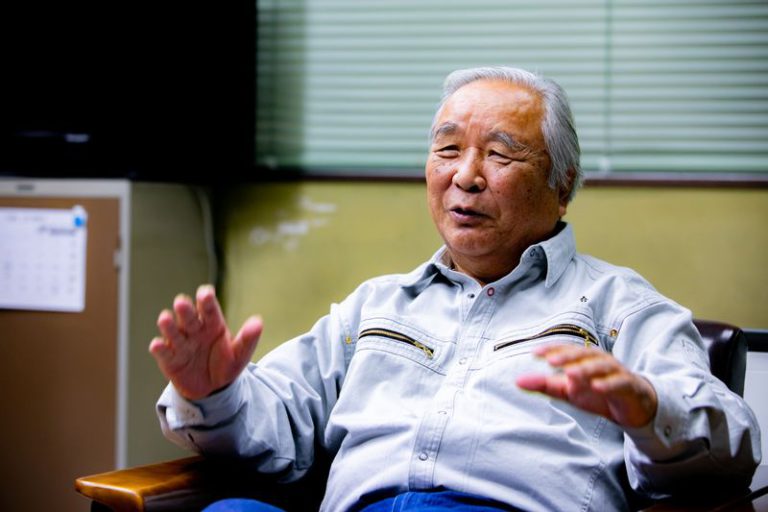
It is said that sweet shrimp were first caught at the Mikuni Port in around1959, when shrimp were found in nets for crabs by chance. The fishermen who noticed this launched an investigation on the hunch that these shrimp lived deep at the bottom of the ocean. They found that these shrimp resided approximately 500 meters under the surface on the sea floor. After this, Hamade and other Mikuni fishermen made great efforts to improve techniques for sweet shrimp trawling. In order to protect limited fishery resources, in recent years, the frequency for catching shrimp was reduced to two to three times a day from its previous seven/eight times a day. In this way, the fishermen are making efforts to preserve the Mikuni sweet shrimp industry for future generations.
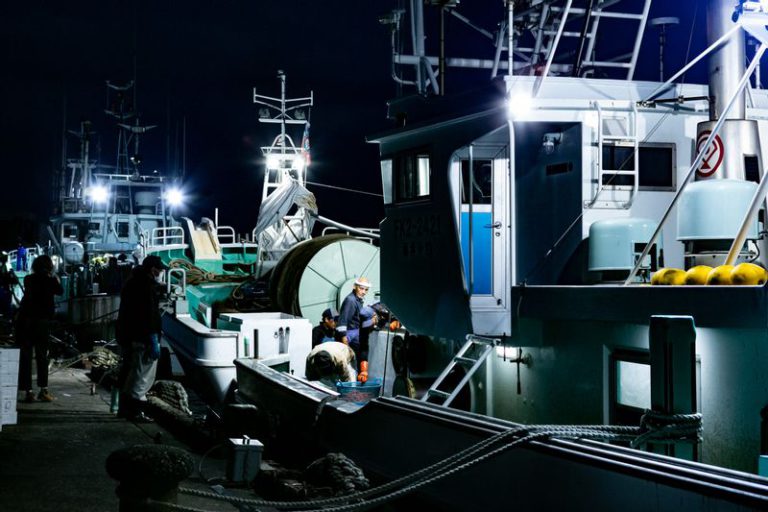
When sweet shrimp initially started to be caught in these waters, although the fishermen knew there were shrimp 500 meters below on the bottom of the ocean, it is said that they had no machines powerful enough to pull nets up from that depth. Due to this, equipment to pull up nets was changed from belts to chains, and evolved to hydraulic devices capable of pulling up nets from ocean floors 1,500 meters below the surface. Furthermore, in order to enable more efficient sweet shrimp farming, trawl nets were tweaked so that they floated slightly above the ocean floor. In this manner, equipment was fine-tuned so that only sweet shrimp were efficiently caught without snagging unwanted items such as starfish along the way.
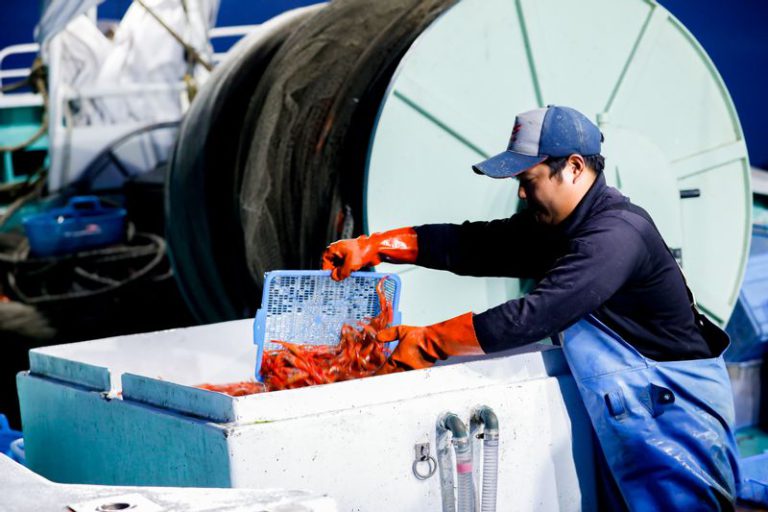
Hamade says, “To us, the fishermen who discovered the sweet shrimp deserve a national medal of honor in their name!”
No.1 in the prefecture! The reason why Mikuni sweet shrimp is so tasty
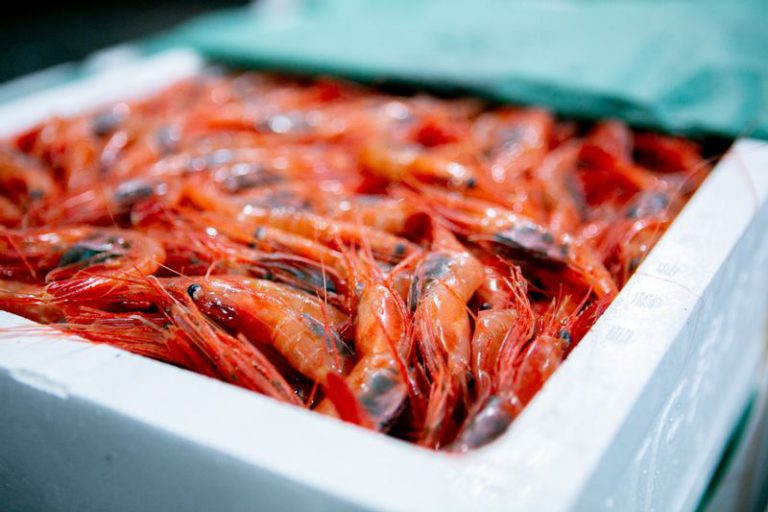
It is not clearly known why high-quality sweet shrimp can be caught around Mikuni Port. One theory suggests that the large rivers flowing through Mikuni, such as the Kuzuryugawa River, carry nutrients from the mountain down to the sea to create fishing grounds rich in nutrients around the Mikuni Port area. Another theory is based on the phytoplankton that is generated in the area, due to the complex tide currents of the Echizen coastline which causes cold seawater containing nutrient salt (components that nurture phytoplankton and kelp) to mix with warm surface seawater on the surface to generate phytoplankton. This, in turn, is said to lure zooplankton, on which fish and sweet shrimp feed.
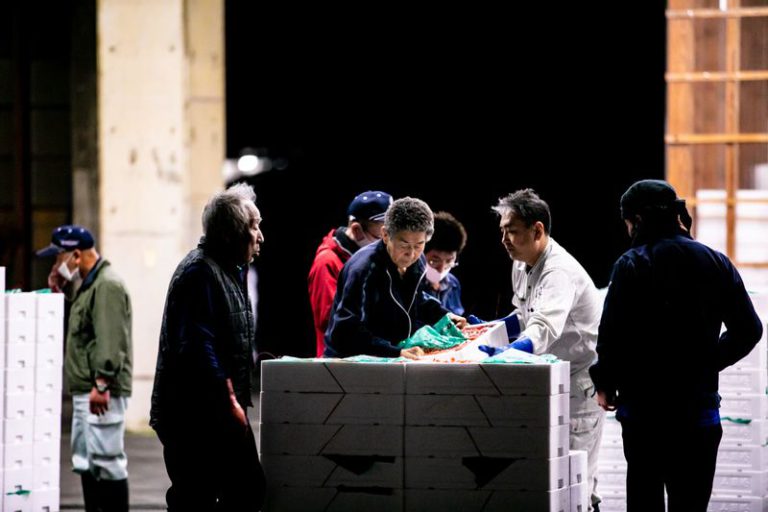
Another unique characteristic of the Mikuni Port sweet shrimp is the auctioning of the shrimp which is conducted from evening to night. The reason is because fishing grounds are one to two hours away from the port (or three to four hours for further fishing areas), meaning that boats departing in the morning will bring back freshly caught sweet shrimp in the evening. Auctioning these shrimp right after arrival allows freshly-caught sweet shrimp to be sold at markets in areas such as Kanazawa the next morning.
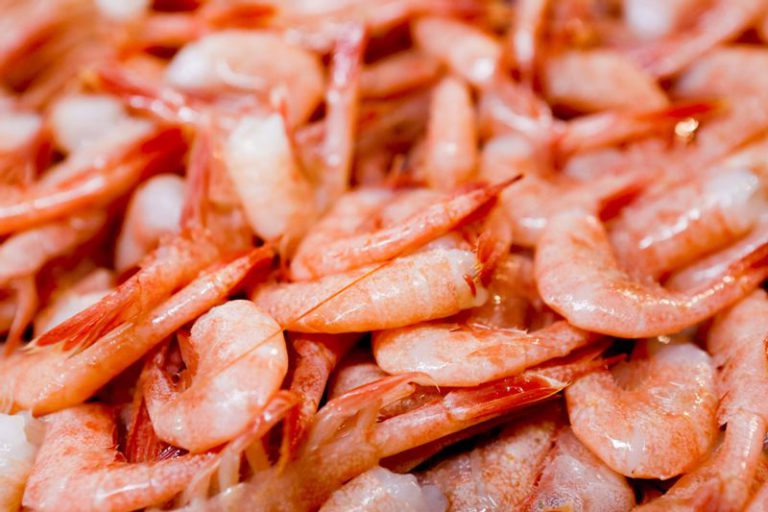
According to Hamade, who knows everything there is to know about sweet shrimp, these sweet shrimp are even more delicious when allowed to slightly mature.
“Allowing fresh sweet shrimp to sit for 24 to 48 hours will create a sweeter taste and stickier texture, which is delicious. Many people believe that the fresher seafood is, the better, but I hope they will try having some matured sweet shrimp as well.”
Savor sweet shrimp with scrumptious Mikuni rice bowls
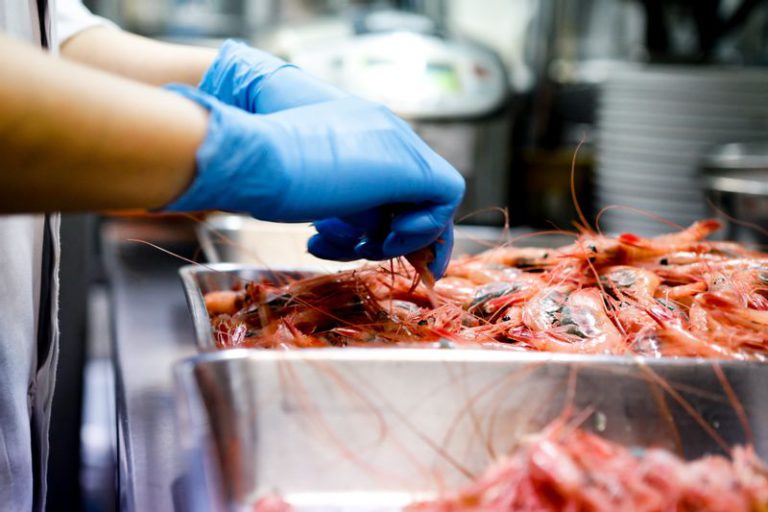
ECHIZEN-KANINOBOU is a restaurant owned by Mikuni’s restaurant/inn BOUYOUROU. Located right in front of Mikuni Port, the restaurant offers delicious sweet shrimp dishes.
ECHIZEN-KANINOBOU uses special equipment to freeze freshly-caught sweet shrimp at −60 degrees Celsius. Doing so allows them to provide customers with fresh sweet shrimp all year round, even during the off season. Furthermore, customers visiting the restaurant during the sweet shrimp season can experience fresh, sweet shrimp which has never been frozen, called agariko.
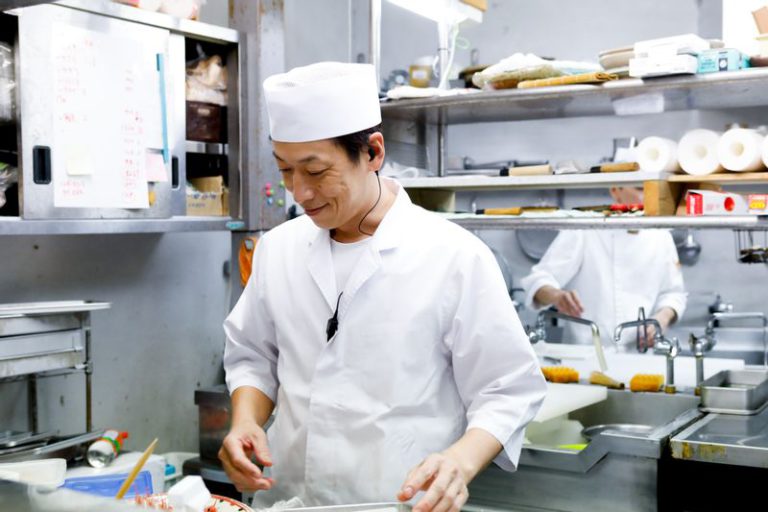
“Although mature sweet shrimp is also tasty, we want our customers to experience the plump texture of fresh shrimp as much as possible. That is why we freeze the shrimp at extremely low temperatures of −60 degrees Celsius to prevent degeneration such as freezer burn. We also shell the shrimp in a special way,” says head chef Toshiaki Ito.
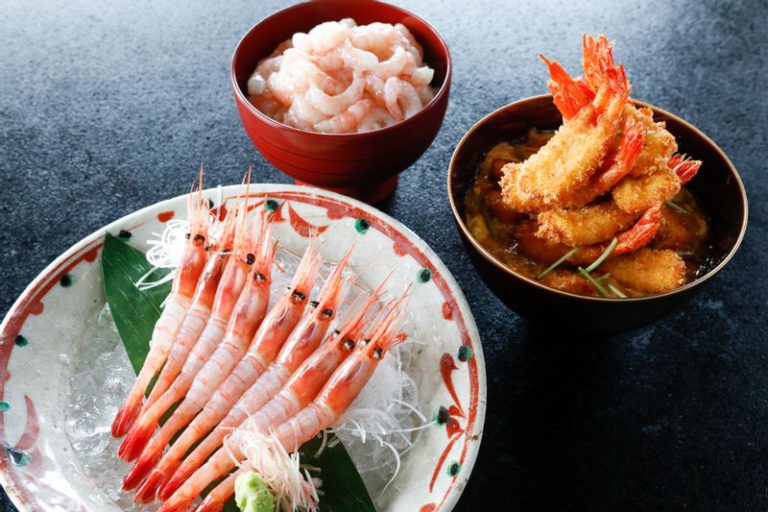
The most popular menu at KANINOBOU is the Mikuniminato Sweet Shrimp Rice Bowl featuring a generous serving of shelled sweet shrimp dressed in special shrimp soy sauce. What is more, the Sweet Shrimp Cutlet Pyramid Rice Bowl with juicy fried sweet shrimp dressed in starchy egg sauce, and the sashimi plate with carefully-selected large Mikuni shrimp are also dishes customers should not miss. Each dish is a local specialty, with excellent visual impact and volume, offering customers mouthful after mouthful of succulent shrimp.
The bright red sweet shrimp is found in the seas of Mikuni, where sweet shrimp fishing originated. Try it, and we are sure you will be addicted to its melt-in-your-mouth texture and sweetness!
Sweet Shrimp from Mikuni
Source:Masakatsu Hamade, Representative Director and President of the Mikuni Sea Vessel/Trawl Fishing Cooperative.Peak Season
Wintertime from September to early November, and springtime from March to June.
Tips
Quality sweet shrimp have a bright red color.
How to enjoy them
Sashimi, fried dishes, etc.

